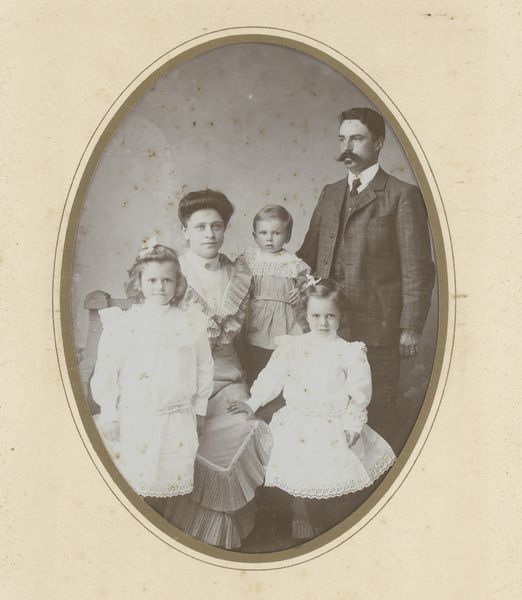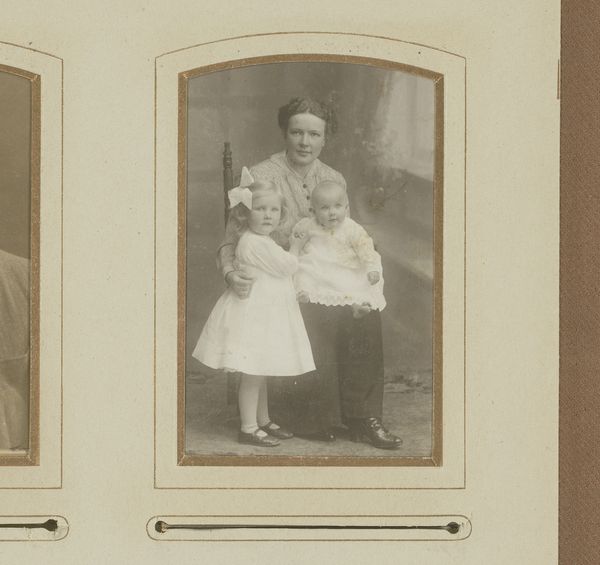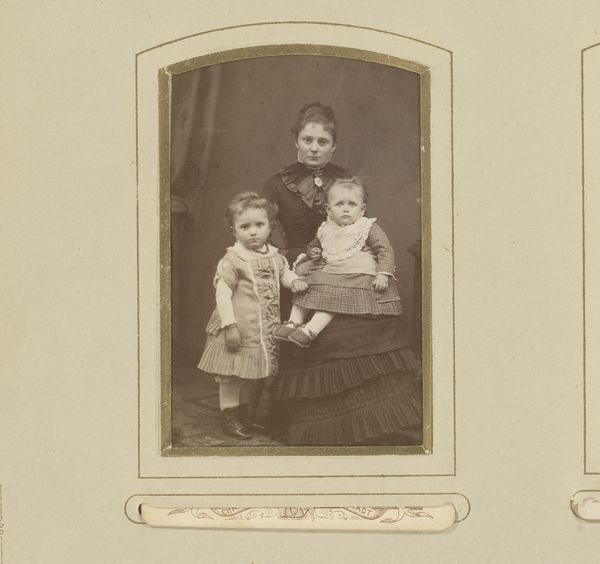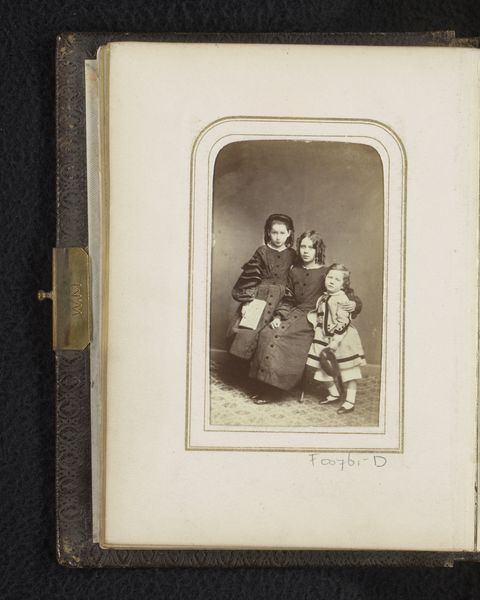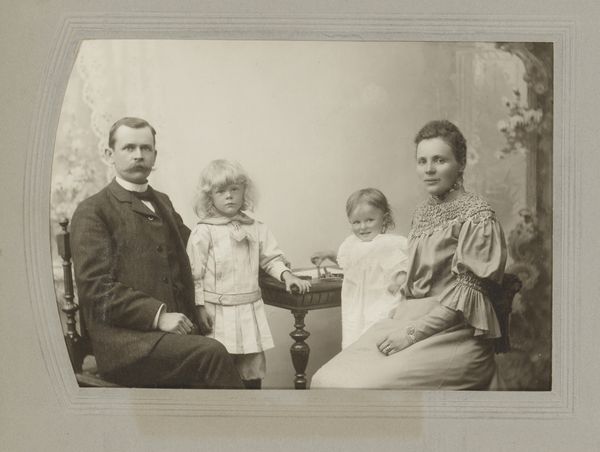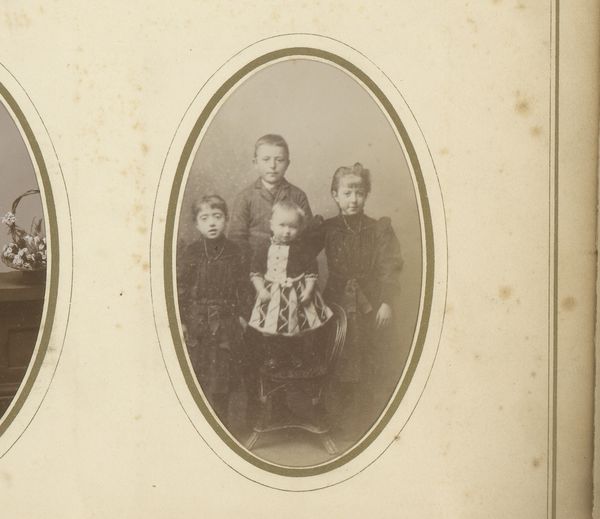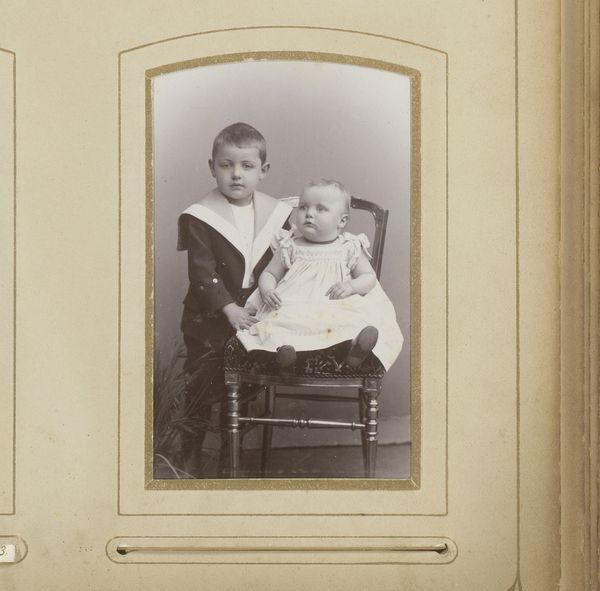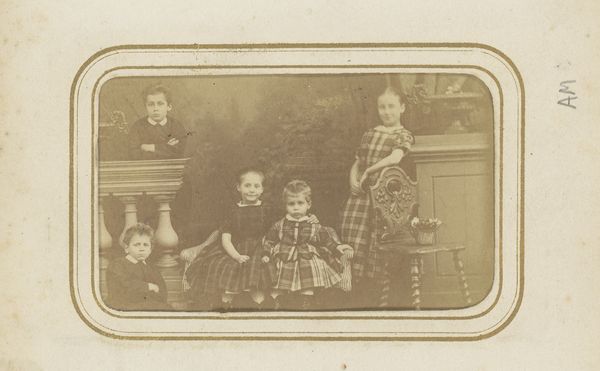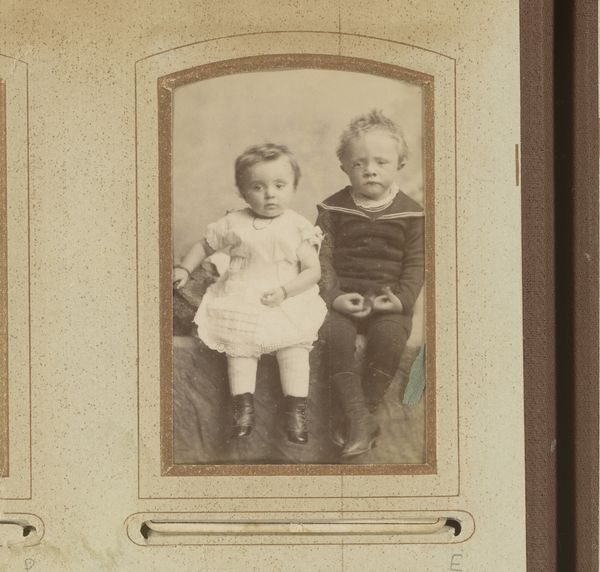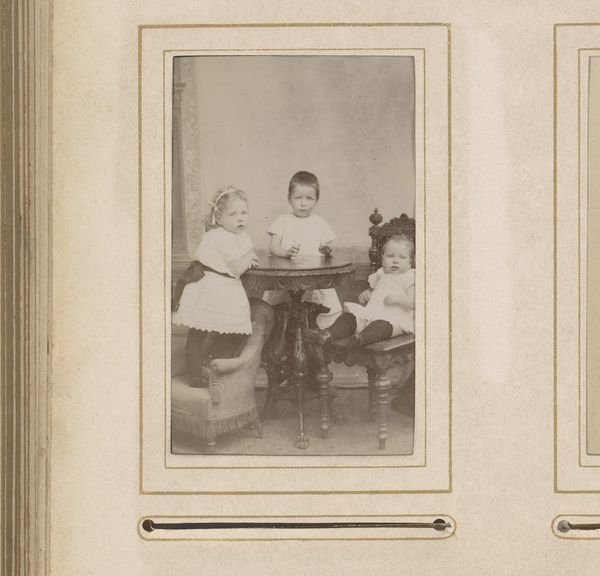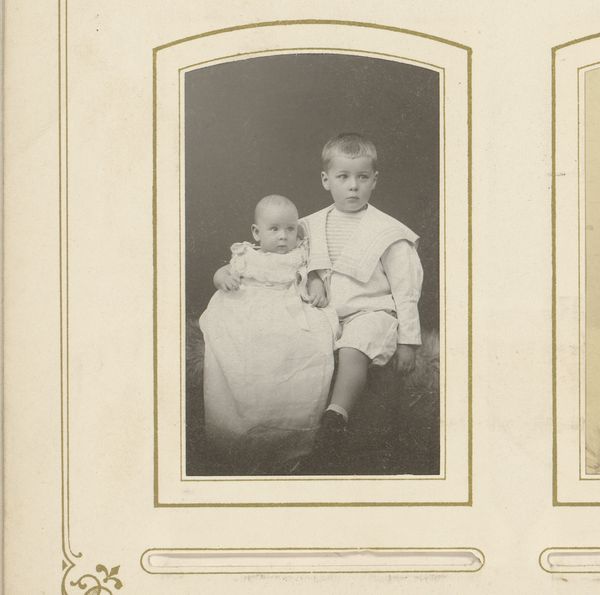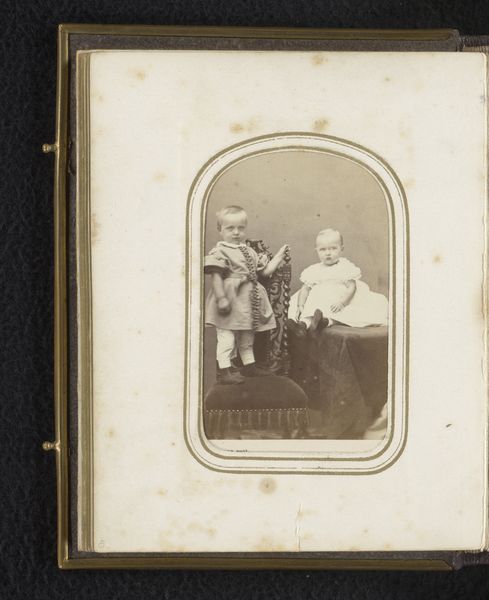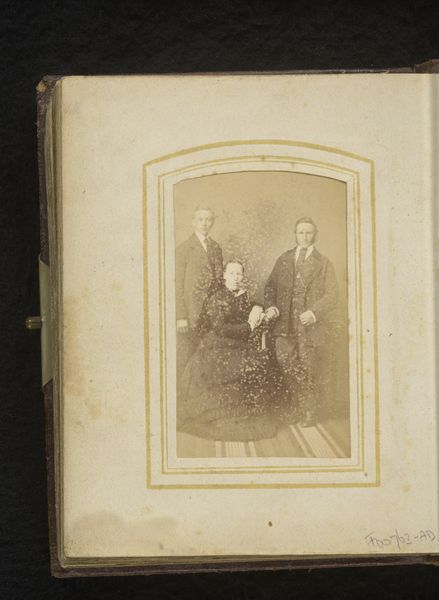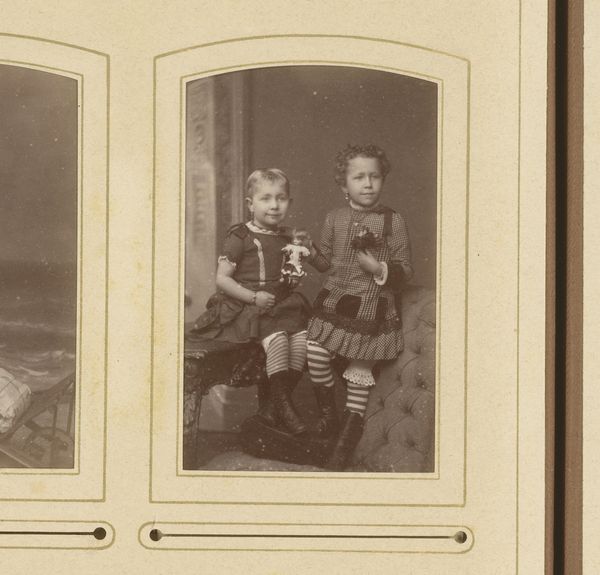
Dimensions: height 81 mm, width 52 mm
Copyright: Rijks Museum: Open Domain
Editor: Here we have an intriguing photographic portrait, "Portret van een man, een vrouw en drie kinderen," dating roughly between 1850 and 1900. It's a gelatin silver print. The subjects are quite stern. What can you tell me about it? Curator: As a materialist, my interest is piqued by the gelatin silver print itself. This process marks a shift in photographic production, impacting accessibility and dissemination of images. Editor: How so? Curator: Consider the socio-economic implications. This process, allowing for easier reproduction, meant that photography became more democratized, moving beyond the realm of the elite. The ability to mass produce images affected both artistic creation and consumption. Note also how the subjects’ clothing acts almost as a display of wealth. Editor: I see what you mean. The formality of the garments, rendered so clearly by the gelatin silver process, hints at a rising middle class defining itself through material possessions and image making. The actual making of this picture contributes meaning. Curator: Exactly. Think about the labour involved, the photographers who catered to this burgeoning market. How might the act of commissioning and creating such a portrait have shaped family identity during that era? How did this intersect with industrial advancements? Editor: So it's not just about the image, but the means of its production, distribution, and reception. This was a way for ordinary families to assert and communicate their identities. Thank you! Curator: And understanding those forces, both aesthetic and commercial, really informs how we read photographs such as these. I’ve enjoyed our discussion.
Comments
No comments
Be the first to comment and join the conversation on the ultimate creative platform.
